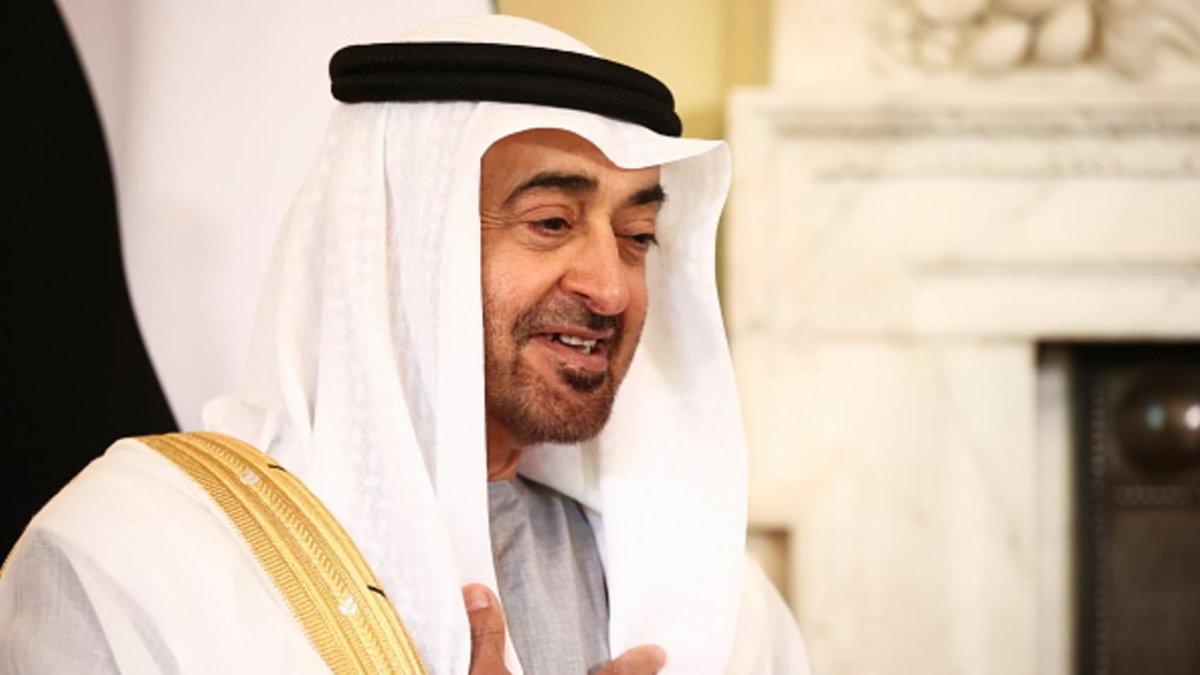UAE Aims to Grow Trillion Partnership with U.S. in AI and Investment

UAE President Sheikh Mohammed Bin Zayed Al Nahyan Visits U.S.: A New Era of Partnership and Innovation
As UAE President Sheikh Mohammed bin Zayed Al Nahyan embarks on his inaugural official trip to the United States, there is palpable excitement about the potential evolution in U.S.-UAE relations. Scheduled for a pivotal meeting with President Joe Biden and Vice President Kamala Harris this Monday in Washington, D.C., the discussions aim to focus on advancing the partnership into a new “geo-economic phase.” This approach centers not just on traditional alliances, but on innovation, investment, and addressing pressing regional challenges, including the ongoing war in Gaza.
Anwar Gargash, a senior advisor to Sheikh Mohammed, emphasized the significance of this visit from an Emirati perspective, stating, “The purpose of the visit is really from an Emirati perspective; it’s investing in our future … through an economic lens.” This sentiment underscores a shift in Emirati strategy as they seek to enhance their relationship with the U.S. beyond mere oil and defense dependencies.
Strategic Discussions on Regional Challenges
While the humanitarian crisis in Gaza remains at the forefront of global discussions, with escalating violence drawing significant concern, Gargash reaffirmed that the main focus of this meeting will shift away from conflict discussions towards a deeper economic collaboration. He remarked, “We are more in a geo-economic phase,” highlighting the UAE’s intention to broaden security cooperation and pave the way for advancements in sectors like artificial intelligence, renewable energy, climate action, and space exploration.
UAE Ambassador to Washington, Yousef al-Otaiba, echoed this sentiment, stating that the leaders would celebrate the 50-year trajectory of partnership in trade and investment. The UAE has positioned itself as a rapid adopter of advanced technologies, particularly in AI, aligning closely with U.S. interests. “Few countries are moving as fast on advanced technologies and artificial intelligence — and as closely in sync with the U.S. — as the UAE,” he added.
A Regulatory Sandbox for Innovation
The conversation around artificial intelligence is particularly noteworthy as OpenAI CEO Sam Altman previously referred to the UAE as “the world’s regulatory sandbox.” This theory positions the UAE as a testing ground for AI applications, enabling innovative tech ventures while ensuring regulatory safety. This vision was recently bolstered by Microsoft’s major .5 billion investment in G42, the UAE’s leading AI firm, and the establishment of the Global AI Infrastructure Investment Partnership, which includes notable firms such as BlackRock and Global Infrastructure Partners. This consortium aims to enhance the infrastructure needed to support burgeoning AI technologies.
Given the robust relationship the UAE maintains with both the U.S. and China, these meetings are timely. The Emirates are navigating complex waters concerning technological investments while facing scrutiny from the Biden administration over national security concerns, particularly involving chip exports.
A Trillion-Dollar Relationship
In terms of economics, the U.S.-UAE partnership is anything but trivial. Bilateral trade reached approximately .4 billion in 2023, showcasing robust economic ties. Furthermore, the UAE’s total investments in the U.S. exceed an impressive trillion. These investments span various sectors, including real estate, technology, and infrastructure, primarily led by sovereign wealth funds such as the Abu Dhabi Investment Authority and Mubadala Investment Company.
The UAE is not only a critical trade partner but also plays a strategic role in U.S. defense operations. Hosting the American airbase at Al Dhafra, the UAE collaborates closely with the U.S. on security-related missions, including efforts in Afghanistan and Iraq. Their involvement in the fight against ISIS and in various regional conflicts speaks volumes about the importance of the UAE in the broader U.S. defense landscape.
Looking Ahead: The Next 20 Years
As Gargash noted, this meeting is more than just a routine diplomatic visit; it represents the laying of a strategic roadmap for the next two decades. The emphasis on developing a “360-degree relationship” illustrates a commitment to diversifying cooperation across a multitude of sectors.
The backdrop of these discussions, especially the ongoing conflict in Gaza, adds a layer of urgency to the talks. The latest violence in the region, including Israeli military operations against Hezbollah in Lebanon and Iranian support for Houthi rebels in Yemen, adds complexity to the geopolitical landscape and calls for a nuanced international response.
In conclusion, Sheikh Mohammed bin Zayed Al Nahyan’s visit is not just about addressing immediate concerns; it’s about carving out a renewed path for collaboration that emphasizes mutual growth, technological advancement, and strategic security. As both nations look to the future, the implications of their partnership could reshape economic and technological landscapes across the globe.
—
Tags: #UAE #BusinessNews #EconomyNews







